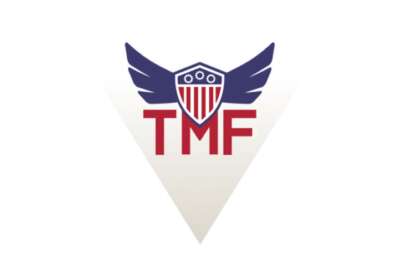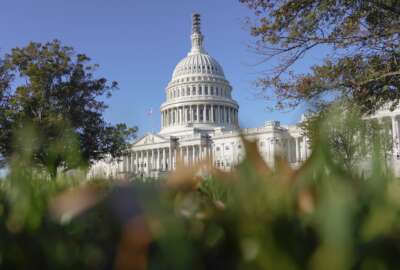Hubbard Radio Washington DC, LLC. All rights reserved. This website is not intended for users located within the European Economic Area.
Congress calls for more details on federal telework in 2024 spending package
Congressional appropriators lay out six new agency reporting requirements on federal telework and return-to-office in the 2024 government spending agreement.
Congress is looking for details on federal telework as part of the latest government spending agreement — echoing months of return-to-office scrutiny from the House Oversight and Accountability committee.
Among its many provisions, the agreement congressional appropriators reached Thursday for the back half of fiscal 2024 government spending bills lays out six new requirements on federal telework and return-to-office for federal employees.
Within 90 days of the legislation’s enactment, the Office of Management and Budget will have to turn over all agencies’ return-to-office “action plans” outlined earlier this year, lawmakers said in an explanatory statement for the 2024 Financial Services and General Government bill.
The action plans, initially required as part of an OMB memo last April, detail agencies’ federal telework and in-office requirements, as well as measurements for workforce factors like productivity and employee engagement.
Now almost a year after OMB’s initial call for agencies to begin returning staff to the office at least 50% of the time, the White House has continued to press agencies who appear to be falling behind on the requirements.
As part of the appropriations package, agencies will also have to provide information on the average number and percentage of employees working in the office during a typical two-week pay period; their most recent policy on federal telework — including any agreements with unions; and how they measure productivity for teleworking employees.
In reaction to the new reporting requirements, the American Federation of Government Employees called on Congress to embrace federal telework and remote work as an important flexibility, which the union said improves morale, productivity, recruitment and retention.
“Language attempting to tie the hands of the administration when it comes to determining the correct balance of in-person and remote work at each of our federal workplaces is particularly frustrating,” AFGE National President Everett Kelley said in a statement.
The National Treasury Employees Union, however, approached the provision and upcoming requirements for further information with a more hopeful mindset.
“We support a data-driven, fair analysis of the telework programs now in place for eligible federal employees across government,” NTEU National President Doreen Greenwald said in a statement. “NTEU is confident that Congress will ultimately agree that telework is a benefit to federal employees, their agencies and the taxpayers they serve, and reject arbitrary caps and other measures that inhibit this proven workplace practice.”
Reporting requirements on federal office space
In the spending agreement, lawmakers are also setting requirements for agencies to provide more information to Congress about federal office space. The federal footprint has been steadily declining, but agencies still holding onto excess and underutilized office space is a main reason the Government Accountability Office has kept federal real property management on its High-Risk List for over 20 years.
Agencies that have an office space utilization rate of less than 60% will have to submit to Congress a description of their current efforts to reduce their physical footprint. Agencies will also have to detail the total office space costs, the average utilization rate and the estimated cost of underutilized space, the lawmakers said.
The federal telework and office space reporting requirements come after nearly a year of the Oversight committee calling for more information and better data on telework, remote work and in-office requirements, as well as impacts on productivity and services to the public.
Staff for Oversight committee Chairman James Comer (R-Ky.) did not immediately respond to Federal News Network’s request for comment.
At the same time, the Office of Personnel Management has said telework supports federal recruitment and retention, and offers agencies opportunities for cost savings, according to OPM’s latest telework report to Congress.
The new requirements also aren’t limited to civilian agencies. The Defense Department 2024 spending bill directs GAO to submit a report on telework to the congressional defense committees within 180 days of the bill’s passage, lawmakers said. That report should detail DoD’s adherence to telework and remote work policies, as well as details on the number of DoD employees who telework.
Lawmakers said the report will also have to weigh the cost and efficacy of telework and how it compares with in-person work, especially considering impacts on training and development of employees, and organizational cohesion.
DoD recently updated its telework policy for the first time since 2012, creating a more flexible policy that now addresses both telework and remote work.
As the 2024 spending agreement nears the finish line, the Biden administration is also already looking ahead to funding levels for 2025. Part of the administration’s plans for the coming fiscal year outline further studies on federal telework and the government’s hybrid work posture.
“OPM is conducting and disseminating three research studies on the future of work, assessing the effect of telework, remote work and hybrid work on hiring, engagement and retention, as well as a project to improve accessibility of organizational health and organizational performance data for agency leaders through toolkits and dashboards,” OMB said in a 2025 budget request document.
Bureau of Prisons, other federal pay reforms
At the top line, the Financial Services and General Government bill provides $13.7 billion in appropriations, which is $1.1 billion, or 4%, below enacted 2023 funding levels — and $5.7 billion below the White House’s 2025 budget request.
The package gives OPM about $412 million for salaries and expenses, and another $36 million for OPM’s inspector general office. That’s 12% below the Biden administration’s request of $465.8 million in discretionary spending for OPM in 2025.
The spending agreement also aims to address major staffing challenges at the Federal Bureau of Prisons. Congress is calling on OPM to work with BOP and consider possibilities for reforming or modifying the General Schedule to address pay rates for federal correctional officers, who currently have a 40% staffing shortage nationwide.
Lawmakers are also telling OPM to create a direct hire authority for all BOP facilities, and report back to the appropriations committees on the efforts within 90 days of the legislation’s enactment.
Earlier in March, Congress agreed to the overall budget for BOP in its first spending minibus. While staffing levels and salaries for BOP remained the same, the agency’s facilities maintenance budget decreased by 38%, putting the agency $110 million below the 2023 enacted level.
“While we wish more funds were included to address staffing and safety issues across the Bureau of Prisons, we are pleased that Congress directed the administration to research ways to improve pay for correctional officers and staff,” AFGE’s Kelley said.
A couple long-standing provisions for federal pay will also remain intact under the new funding agreement. For one, prevailing rate employees paid through the Federal Wage System will continue to see limits on their pay raises, ensuring they don’t exceed the raises for feds on the General Schedule.
A pay freeze will also remain in effect for the vice president, ambassadors at large, non-career members of the Senior Executive Service (SES) and other senior political appointees positioned at or above level IV of the Executive Schedule.
Despite significant cuts for some agencies and federal programs, the White House is urging a quick passage of the appropriations package, according to a statement of Administration Policy from OMB.
Copyright © 2024 Federal News Network. All rights reserved. This website is not intended for users located within the European Economic Area.
Drew Friedman
Drew Friedman is a workforce, pay and benefits reporter for Federal News Network.
Follow @dfriedmanWFED
Related Stories
Related Topics
All News
American Federation of Government Employees
Budget
Bureau of Prisons
Congress
Defense
direct hire authority
Doreen Greenwald
Everett Kelley
federal office space
federal pay freeze
federal telework
Federal Wage System
general schedule
Government Accountability Office
Hiring/Retention
House Oversight and Accountability Committee
James Comer
National Treasury Employees Union
Office of Management and Budget
Office of Personnel Management
SES
Unions
Workforce






